Convergence of Hindutva Nationalism and Global Islamophobia in the War on Terror Era
In the decades following the September 11, 2001 attacks, the world has witnessed a transnational shift in legislation enacted under the pretext of the United States–initiated “War on Terror” to secure countries and societies against terrorism. This campaign, however, has created an Islamophobic environment. In India, Hindu nationalist politics have intensified anti-Muslim discrimination and intolerance by branding Muslims as terrorists and outsiders. Since the global narrative increasingly depicts Muslims as potential terrorists, it has become easy for Hindutva leaders and media to portray Indian Muslims with suspicion and fear. The convergence of these forces poses serious threats to equality, freedom, minority rights, and the secular principles enshrined in the Indian Constitution.
Hindutva Nationalism and Global Islamophobia
Hindutva nationalism is a political and ideological movement aimed at establishing Hindu hegemony within India. It seeks to reshape the nation’s politics, culture, and laws according to Hindu values while promoting Hindu festivals, symbols, and historical narratives as the dominant markers of national identity. Its agenda and policies, spearheaded by the RSS and BJP, aim to fulfil the mission of a “Hindu Rashtra” through measures such as the Waqf (Amendment) Act, 2025; the Citizenship Amendment Act (CAA) along with the National Register of Citizens (NRC); anti-religious conversion laws; surveillance and policing strategies; and terror legislation. These are accompanied by demographic and cultural narratives that collectively portray Muslims as threats or terrorists.
Islamophobia, on the other hand, is a heterogeneous phenomenon. As Salman Sayyid notes, it represents a form of “Western plutocracy.” Globally, it refers to prejudice, bias, fear, stereotyping, discrimination, and hostility directed at Muslims. After the 9/11 attacks, and as part of the broader “War on Terror,” many governments, media outlets, and political movements worldwide expanded discourses that portrayed Muslims as inherently suspect and linked with terror and extremism. Islamophobia has become a global phenomenon shaped by colonial legacies, racism, and political power. According to the UN Special Rapporteur (2021), nearly two billion Muslims—around 25% of the world’s population—live in societies where anti-Muslim bigotry is on the rise.
Pew Research Center surveys (2020) reveal that Muslims are perceived negatively by over 40% of respondents in some regions of Europe and North America. In the United States, hate-crime reports showed a 67% rise in anti-Muslim incidents in 2021. Such figures highlight that Islamophobia is not confined to any one nation but is sustained globally through politicisation, media narratives, and everyday practices.
This widespread suspicion stands in stark contrast to the very essence of Islam. Far from promoting violence, Islam upholds peace and tranquillity; unjust killing is among the gravest sins after idolatry. The Qur’an strongly emphasises the sanctity of human life, declaring that killing a single person is akin to killing all of humanity (5:32).
In the Indian context, where Muslims form a minority, studies on Islamophobia remain limited in both scope and depth. The scarcity of such research in Muslim-minority societies of the Global South does not indicate the absence of Islamophobia. In India, various movements, events, discourses, and actions clearly exhibit Islamophobic tendencies. Scholars such as Farid Hafez (2018, pp. 210–25) and Brian Klug (2012, pp. 665–81) have noted that Muslim minorities, including those in India, are under-theorised within Islamophobia studies and warrant greater academic attention. Moreover, there is an ongoing effort to label anything associated with Muslims and Islam as disloyal or “anti-Indian.”
Convergence Activities: Mechanisms and Modes
There are several mechanisms through which Hindutva nationalism converges with global Islamophobia:
- Security and Legal Framework:
Governments often enact laws ostensibly to counter terrorism or manage security threats, but these disproportionately impact Muslim communities. The Unlawful Activities (Prevention) Act (UAPA) has been selectively applied to Muslims such as Sharjeel Imam, Umar Khalid, Gulfisha Fatima, Meeran Haider, and Shifa-ur-Rehman, as well as to Muslim organisations like the Students Islamic Movement of India (SIMI) and the Popular Front of India (PFI). - State Regulations and Legislative Reforms:
Acts such as the Citizenship Amendment Act (CAA) explicitly discriminate against Muslims while favouring non-Muslim migrants—Hindus, Sikhs, Buddhists, Jains, Parsis, and Christians—from Afghanistan, Bangladesh, and Pakistan who entered India on or before 31 December 2014. This exclusion is glaring, particularly as other vulnerable groups in South Asia—such as Rohingya Muslims, Sri Lankan Tamils, Bhutanese, Hazaras, Shias, and Ahmadis—receive no such consideration under the discriminatory 2019 amendment.
Similarly, the criminalisation of Triple Ṭalāq and bureaucratic practices such as naming women after their husbands in Aadhaar, passport, and property records further erode the freedom of religion and personal identity. The recent Waqf (Amendment) Act, 2025 grants the government greater control over Muslim religious endowments and their administration. Although the Supreme Court stayed three contentious provisions of this Act—including the clause requiring a person to be a practising Muslim for five years before dedicating property as waqf—the law still politicises religious property and undermines community autonomy.
- Anti-Conversion Legislation:
The Indian Constitution guarantees freedom of conscience and the right of every individual to freely profess, practise, and propagate religion. It also mandates equal treatment of all religions and prohibits discrimination on religious grounds. Yet, ten of India’s twenty-eight states have enacted laws restricting religious conversion for all faiths, with some imposing penalties specifically targeting conversions linked to marriage. - Discursive Framing and Media Narratives:
Muslims are frequently framed as threats—either as potential terrorists or as outsiders. Rhetoric surrounding “love jihad,” “population growth,” “demographic threat,” and “illegal infiltration” echoes Islamophobic tropes found in global “War on Terror” discourses. Even sections of the Western media have cited India as evidence of a broader “Muslim problem,” reinforcing these stereotypes on an international scale. - Social Mobilisation, Majoritarian Sentiment, and Policing of Identity:
Hindutva organisations such as the Vishva Hindu Parishad (VHP), Bajrang Dal, Akhil Bharatiya Vidyarthi Parishad (ABVP), and Hindu Jagran Manch shape public life through festivals, temple-building initiatives, and school curricula that delineate boundaries between communities. Mobs have attacked Muslims merely on suspicion of possessing beef or cow meat, justifying their violence in the name of security and surveillance.
Why the Convergence Is Powerful and Dangerous
The Hindutva–Islamophobia axis operates as more than just an exchange of slogans; it functions as a legitimising framework that enables policies and social practices otherwise incompatible with the norms of a liberal, secular democracy. Yet, this very power conceals grave dangers:
- Subversion of Equal Citizenship:
By privileging one religious community over others through measures such as the Citizenship Amendment Act (CAA), the Waqf takeover, and laws regulating religious conversion, the principle of equal and secular citizenship begins to erode. These policies redefine belonging along religious lines, weakening the constitutional foundation of equality before the law. - Normalisation of Exceptionalism:
Governments increasingly enforce stringent laws in the name of national security, counter-terrorism, and public order. Such laws, accepted under the guise of necessity, undermine core secular and constitutional values—equality, freedom of religion, minority rights, free speech, and judicial independence. The gradual acceptance of these exceptions normalises a state of permanent emergency, where fundamental rights become negotiable. - Communal Polarisation:
The rhetorical divide between “us” (Hindus) and “others” (Muslims) deepens, diverting attention from real social and economic challenges. This divide fuels communal riots, localised violence, and growing insecurity among minorities. In turn, such polarisation accelerates Islamophobic narratives, embedding them within public discourse and state policy.
In the global context, the nexus between Islamophobia, the “War on Terror,” and majoritarian nationalism manifests across numerous countries. In the United States, the United Kingdom, France, and Australia, Muslims are routinely subjected to surveillance and racial profiling, while immigration laws often treat individuals from Muslim-majority nations with suspicion. Some states exploit Islamophobia to justify military actions—such as airstrikes, drone attacks, or special counterterrorism operations—against Muslim nations under the pretext of “fighting terrorism.” Even in global media, violent acts committed by Muslims are swiftly branded as “terrorism,” whereas similar acts by non-Muslims are downplayed as “shooting incidents” or “isolated attacks.”
These patterns, replicated worldwide, reveal how Islamophobia has been weaponised—to justify wars, manipulate public sentiment, and divert attention from deeper political and moral crises.
Recent Cases
In February, a crowd of nearly 20,000 Christians gathered in New Delhi to protest the growing violence against them and to demand stronger protection for their community. Both Christians and Muslims have been arrested under laws banning forced religious conversions—laws that, in many cases, are used to harass and imprison members of minority groups on false or fabricated charges.
Hundreds of people, mostly Muslims, have been deported from Delhi and from the states of Gujarat, Rajasthan, and Maharashtra. In Gujarat, police claimed to have arrested over 6,500 suspected “Bangladeshi citizens” and publicly paraded thousands of them, only to later admit that merely 450 were undocumented. In May, Bangladesh border guards returned four Muslim men who had been arrested by police in Mumbai and expelled to Bangladesh, after it was discovered that they were, in fact, Indian migrant workers from West Bengal. Such treatment marks a clear departure from humane governance and stands in violation of both international law and the inherent dignity of the affected individuals.
Human Rights Watch reported that Indian authorities have expelled hundreds of ethnic Bengali Muslims to Bangladesh in recent weeks without due process, claiming they were illegal immigrants, though many were actually Indian citizens. According to Bangladesh’s Border Guard, India expelled more than 1,500 Muslim men, women, and children to Bangladesh between May 7 and June 15—a wave of forced deportations that continues unabated.
In Assam, Bengali Muslims suspected of being “infiltrators” face discriminatory citizenship scrutiny through Foreigners Tribunals, first established in 1964. By January 2025, these tribunals had declared 165,992 people as irregular immigrants. Between 1985 and February 2019, 63,959 individuals were declared foreigners. In August 2019, the National Register of Citizens (NRC) excluded 1.9 million residents—ironically, the majority of them Hindus.
More recently, Assam Chief Minister Himanta Biswa Sarma allegedly directed officials in fifteen Muslim-majority districts to evacuate residents or face removal. A video titled “Assam Without BJP” depicted an overwhelmingly Muslim-dominated Assam, apparently designed to polarise communities for electoral advantage. Such actions could amount to criminal conspiracy, abetment, and the promotion of enmity between religious groups, as well as a violation of the Model Code of Conduct governing the Bodoland Territorial Council (BTC) elections.
Political Challenges Facing Muslim Communities in India
Muslim communities in India today face two major political challenges resulting from government actions:
- Division of Muslim-populated constituencies, and
- Reservation of those constituencies for Scheduled Castes (SC) or Scheduled Tribes (ST).
The National Election Commission has recently carried out the delimitation of Lok Sabha and Legislative Assembly constituencies in Assam. Out of 14 Lok Sabha and 126 Legislative Assembly seats, one parliamentary and nineteen assembly constituencies have been altered. In several cases, Muslim-majority constituencies have been reserved for ST candidates despite their overwhelming Muslim populations.
Assam:
Barpeta (70.74% Muslim) and Dhubri (79.67% Muslim) are key examples. In Barpeta, three constituencies were merged with others, reducing the Muslim share to around 30%, thereby making Muslim electoral victories significantly harder.
West Bengal:
Katwa in Bardhaman district, where Muslims consistently won between 1956 and 2009, was bifurcated into Bardhaman Purba and Bardhaman Durgapur after delimitation and subsequently reserved for SC candidates. Similarly, Nabagram has approximately 53% Muslims and 23% ST population, yet the seat is reserved for the ST.
Uttar Pradesh:
In Ngina, a parliamentary constituency with about 47% Muslims and 21% SC population, the seat is reserved for SC candidates.
Gujarat:
Kachchh, with 22% Muslims and 11% SC population, is likewise reserved for the SC.
Jharkhand:
Rajmahal, comprising roughly 34% Muslims and 27% ST population, is reserved for the ST.
Bihar:
Manihari has around 39% Muslims and 13% ST population, yet it too is reserved for the ST.
Even within the SC and ST framework, delimitation has shown inconsistencies that work against these very communities in certain areas. For instance,
- In Gujarat (Banaskantha), where both SC and ST populations are around 11%, the seat is not reserved.
- In West Bengal (Natabari), despite a 42% SC population, the seat remains unreserved.
- In Bihar (Aurangabad), where about 28.5% are SC, the seat is not reserved either.
By contrast, constituencies with smaller SC populations have been reserved. For example, in Karnataka (Gulbarga), where Muslims constitute 23% of the population, the seat is reserved for the SC community.
Raising concerns about such inconsistencies is not an objection to the principle of reservation itself. Genuine reservation aims to empower historically marginalised groups—not to manipulate representation or weaken the political influence of others. A just reservation policy should balance political power, ensuring that no majority group monopolises representation while safeguarding the voices of minority and marginalised communities.
Expanding Islamophobic Policies and State Actions
On 10 September 2025, the Rajasthan Prohibition of Unlawful Religious Conversion Bill was enacted. The All India Muslim Personal Law Board condemned it as blatantly discriminatory. Organisations such as Jamiat Ulema-e-Hind, the Social Democratic Party of India (SDPI), and the People’s Union for Civil Liberties (PUCL) described the bill as a political weapon designed to harass non-Hindu minorities, particularly Muslims. They warned that it grants police sweeping powers to confiscate property and detain individuals based merely on allegations of conversion—fostering what they termed a “bulldozer culture.”
In Haryana, more than 300 Muslim-owned homes and businesses have been demolished. In New Delhi, during the 2020 protests against the controversial Citizenship (Amendment) Act (CAA), authorities invoked the Unlawful Activities (Prevention) Act (UAPA) against activists. Similarly, in Uttar Pradesh, predominantly Muslim neighbourhoods have been targeted, with about 37% of Muslim localities reportedly demolished. The Babri Masjid was previously destroyed, and several other historical mosques are now reportedly under threat. Under the pretext of national security, more than 12,500 homes around Ahmedabad’s Chandola Lake have also been demolished.
Political leaders and party members have repeatedly employed hate speech and conspiracy theories against Muslims. The National Council of Educational Research and Training (NCERT) has removed references to the Mughal Empire and Delhi Sultanate from its Class 7 Social Science textbooks, replacing them with topics on ancient Indian dynasties and cultural traditions such as the Maha Kumbh. Similarly, portions from the Class 12 Political Science textbook mentioning the brief ban on the RSS following Mahatma Gandhi’s assassination have been omitted. Such curricular revisions normalise discrimination, fuel hate crimes, and incite communal hostility—especially during election cycles. At the same time, individuals and officials who act against Muslims are often celebrated, symbolically “welcomed with garlands,” further emboldening intolerance.
The Waqf (Amendment) Act, 2025, enacted in April 2025, grants increased state control over waqf properties and allows the registration of non-Muslims on waqf boards. Critics argue that these provisions enable greater political interference, reduce transparency, and threaten the historical autonomy of Muslim religious endowments.
In a most recent incident, police arrested a Muslim man for displaying an “I Love Muhammad” banner along a procession route, claiming it represented a “new tradition.” The banner was part of a legitimate religious celebration. Article 25 of the Indian Constitution guarantees every individual the right to freedom of conscience and the liberty to freely profess, practise, and propagate their religion—rights that such actions blatantly undermine.
Paths Forward
There are several paths to resist the worst effects of this convergence.
In the judicial sphere, unfair laws—such as the Citizenship Amendment Act (CAA), anti-conversion legislations, and the Waqf (Amendment) Act—must be challenged in court to uphold equality, religious freedom, and due process of law. Government security agencies should remain accountable through judicial, legislative, and civil society oversight, ensuring that surveillance, detention, and deportation powers are not misused.
A responsible media must promote balanced and ethical reporting—avoiding portrayals of Muslims as a threat and instead highlighting shared human values. Educational curricula should be revised to include inclusive and accurate histories that encourage critical thinking and interfaith understanding.
Local communities must be empowered to document abuses, use digital tools to counter misinformation, and build cross-faith coalitions. Engagement with human rights organisations, international media, and diaspora networks can draw global attention to rights violations and mobilise pressure for reform of discriminatory policies.
The convergence of Hindutva nationalism and global Islamophobia in the “War on Terror” era represents a mutually reinforcing set of ideas, laws, and political motives. Its real strength lies in the enforcement of harsh and exclusionary policies that privilege the majority while marginalising minorities.
The spirit of India’s Constitution—rooted in secularism, equality, and freedom of religion—faces serious threats as political forces advance majoritarian narratives of national identity, and as global “War on Terror” discourse frames Muslims as inherent suspects under the guise of security. This convergence erodes India’s foundational democratic values.
Democratic pluralism, equality, and citizenship must be lived realities, not abstract ideals confined to paper. Citizens, activists, and policymakers alike must reflect on their roles: Are they silently accepting the fusion of Hindutva and Islamophobia? Who is counted as a true citizen? What defines a “threat”? How do religion and national identity shape the law? And how do global fears interact with local politics to perpetuate fear and division?
Only through such introspection and collective action can India reclaim its pluralistic and constitutional promise.
About the author
Muhammed Asjad Raza is a postgraduate student in the Department of Study of Religions at Darul Huda Islamic University, Kerala, India.
References
- Beydoun, Khaled A. 2020. “Exporting Islamophobia in the Global ‘War on Terror.’” NYU Law Review Online 95 (April): 81–99.
- Kunnummal, Ashraf. 2022. “Islamophobia Studies in India: Problems and Prospects.” Islamophobia Studies Journal 7 (1): 25–44.
- Amnesty International. 2024. India: Citizenship Amendment Act Is a Blow to Indian Constitutional Values and International Standards. March 14, 2024.
- Press Information Bureau. 2025. “The Waqf (Amendment) Bill, 2025: Benefits of the Bill.” Ministry of Minority Affairs, April 3, 2025.
- Morgan, Dylan. 2023. Islamophobia in India and Its Impact on India’s Foreign Relations. Independent Study Project (ISP) Collection 3723. SIT Study Abroad.
- TOI News Desk. 2025. “Waqf Amendment Act: Supreme Court to Deliver Interim Order Monday; Non-Muslims in Waqf Boards, ‘Waqf by User’ Under Scrutiny.” Times of India, September 13, 2025.
- Ellis-Petersen, Hannah, and Shaikh Azizur Rahman. 2025. “India Illegally Deporting Muslim Citizens at Gunpoint to Bangladesh, Say Rights Groups.” The Guardian, June 19, 2025.
- Times of India. 2025. “Muslim Bodies Term Anti-Conversion Bill as a Weapon to Harass Minorities.” Times of India (Jaipur), September 12, 2025.
- Sharma, Saurabh, and Krishna N. Das. 2024. “India Court Effectively Bans Madrasas in Big State before Election.” Reuters, March 23, 2024.
- Bakali, Naved, and Farid Hafez. 2022. The Rise of Global Islamophobia in the War on Terror: Coloniality, Race, and Islam. Postcolonial International Studies. Manchester: Manchester University Press.
- U.S. Department of State. 2023. 2023 Report on International Religious Freedom: India.
- Bridge Initiative Team. 2022. “2021 Islamophobia in Review: India.” Georgetown University, January 5, 2022.
- Malik, Aftab. 2025. A National Response to Islamophobia: A Strategic Framework for Inclusion, Safety and Prosperity. Foreword by Usman Khawaja. Canberra: Office of the Special Envoy to Combat Islamophobia.
Disclaimer
The views expressed in this article are the author’s own and do not necessarily mirror Islamonweb’s editorial stance.

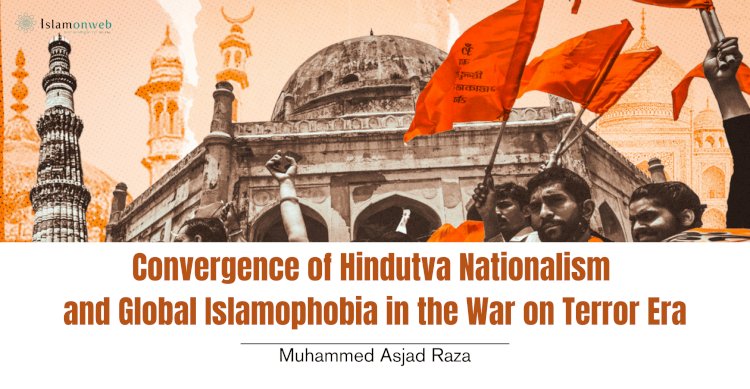


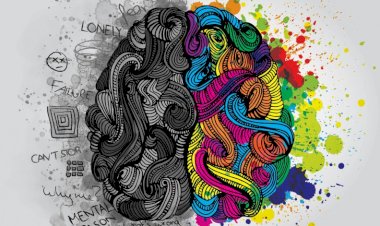
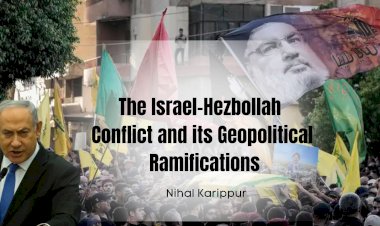














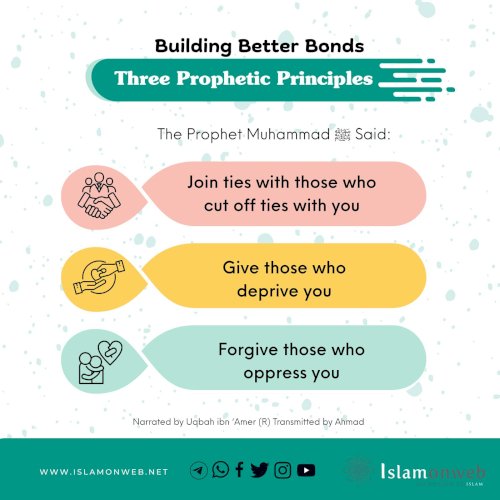
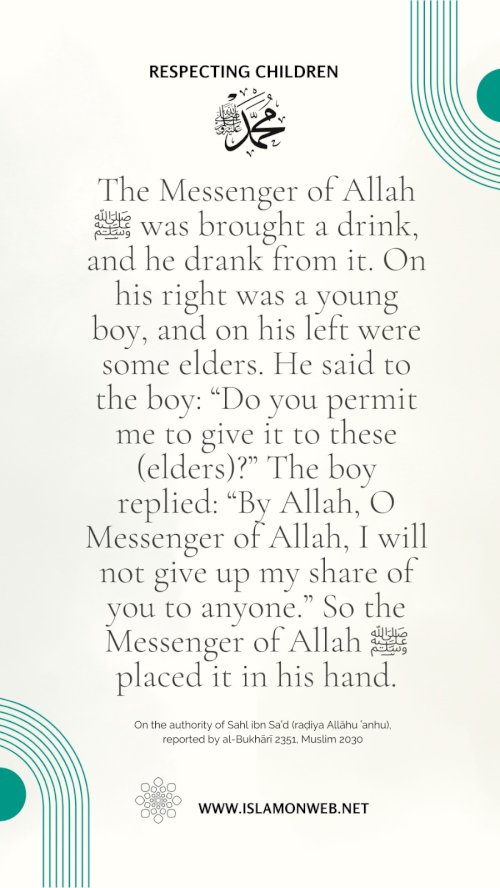


Leave A Comment